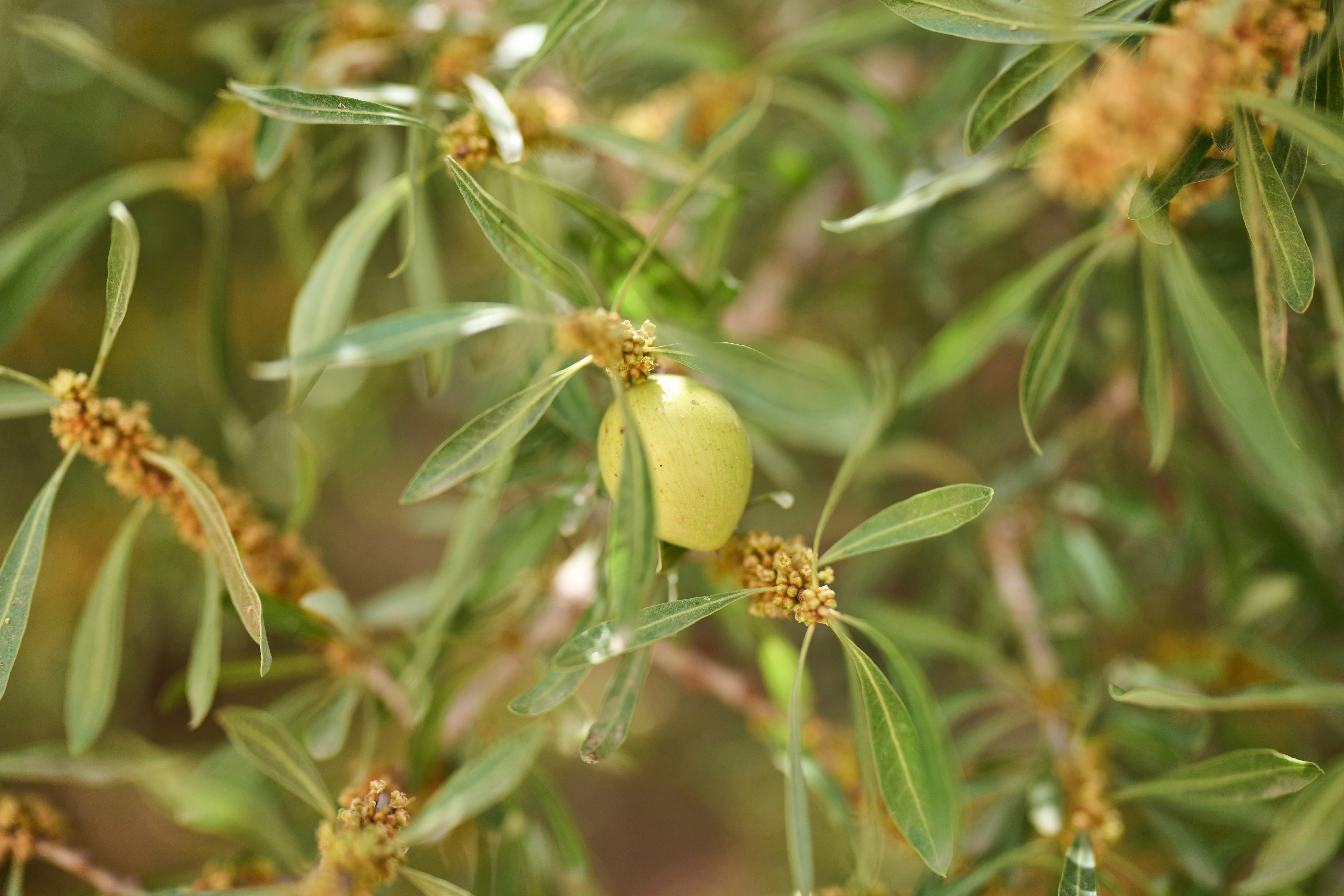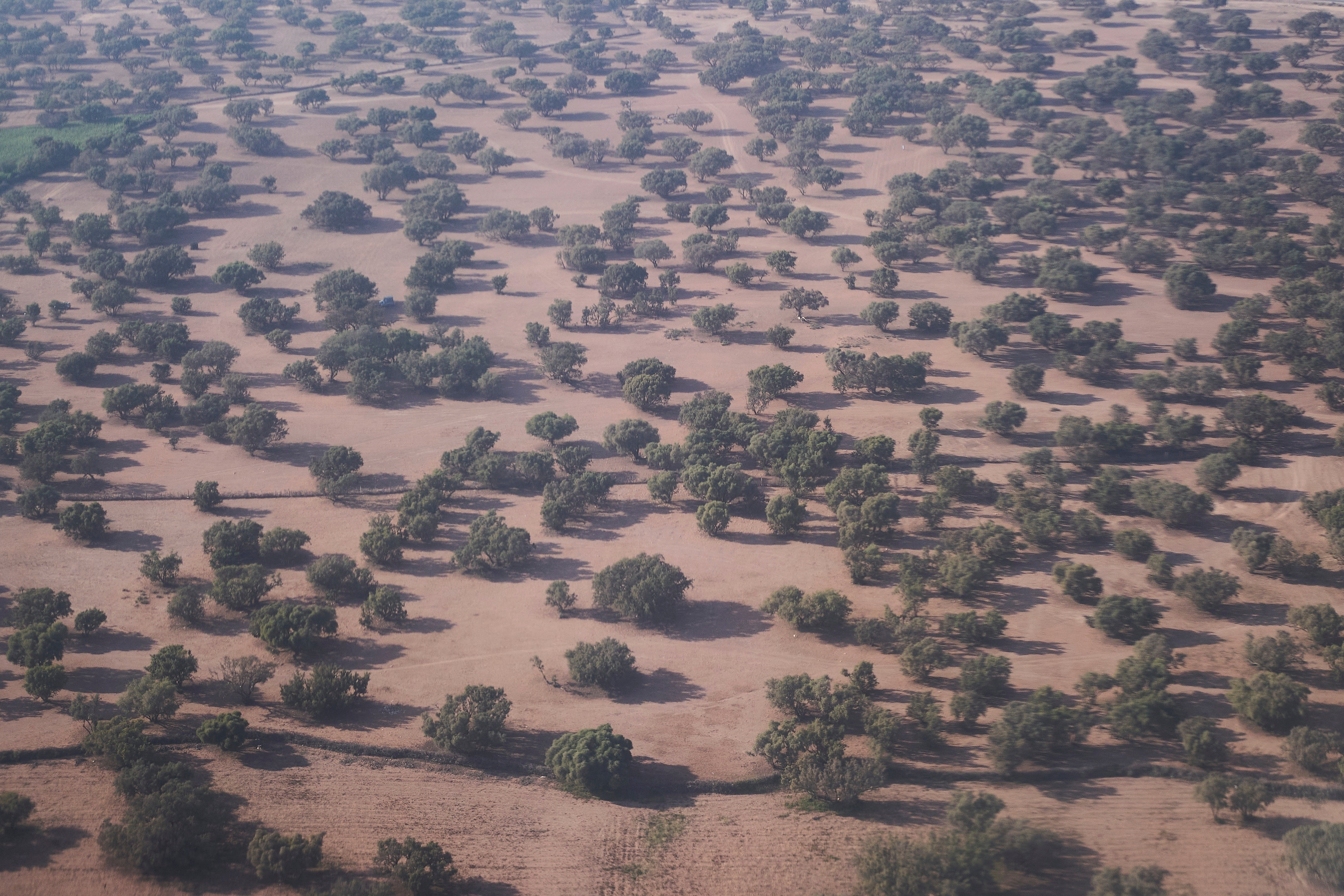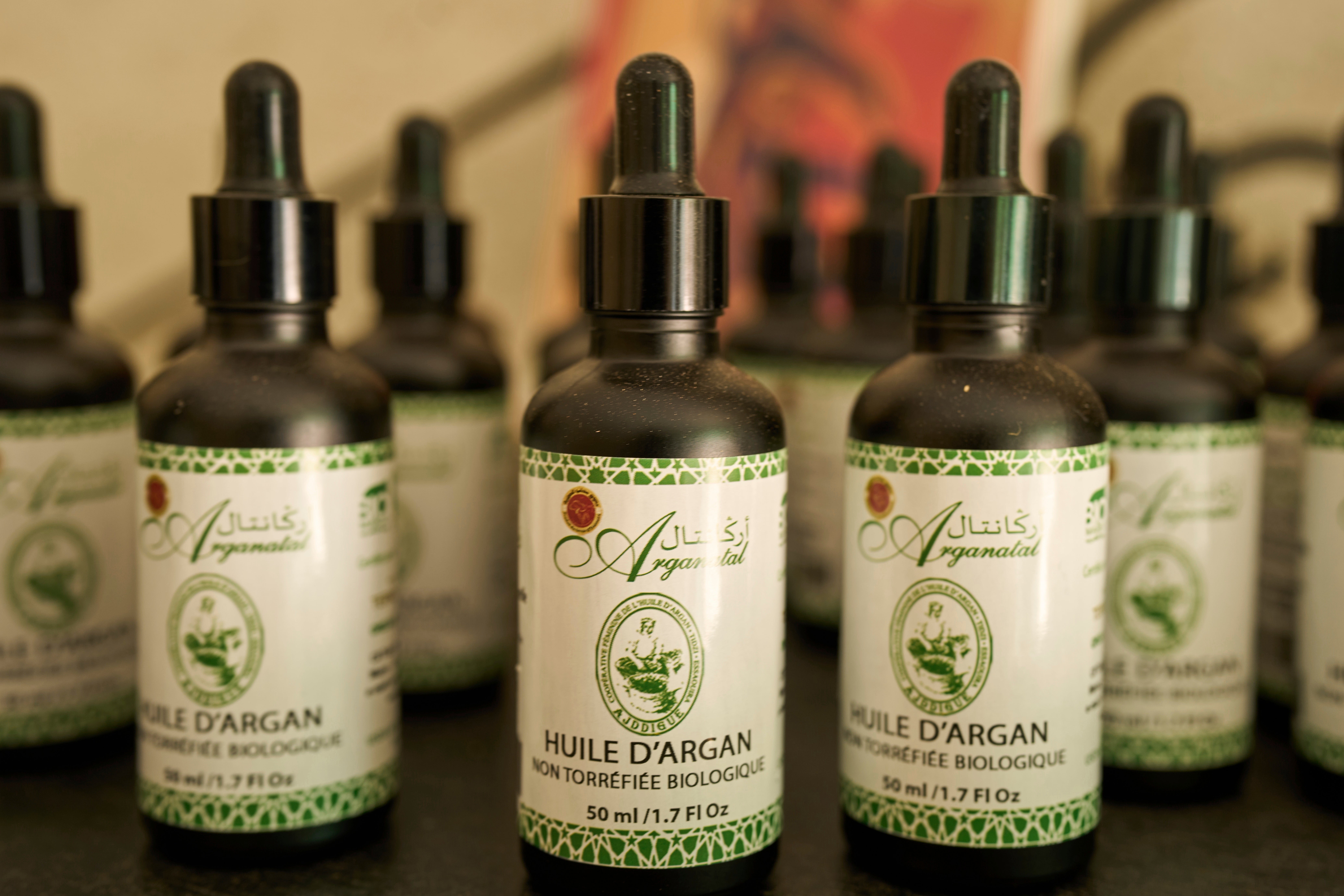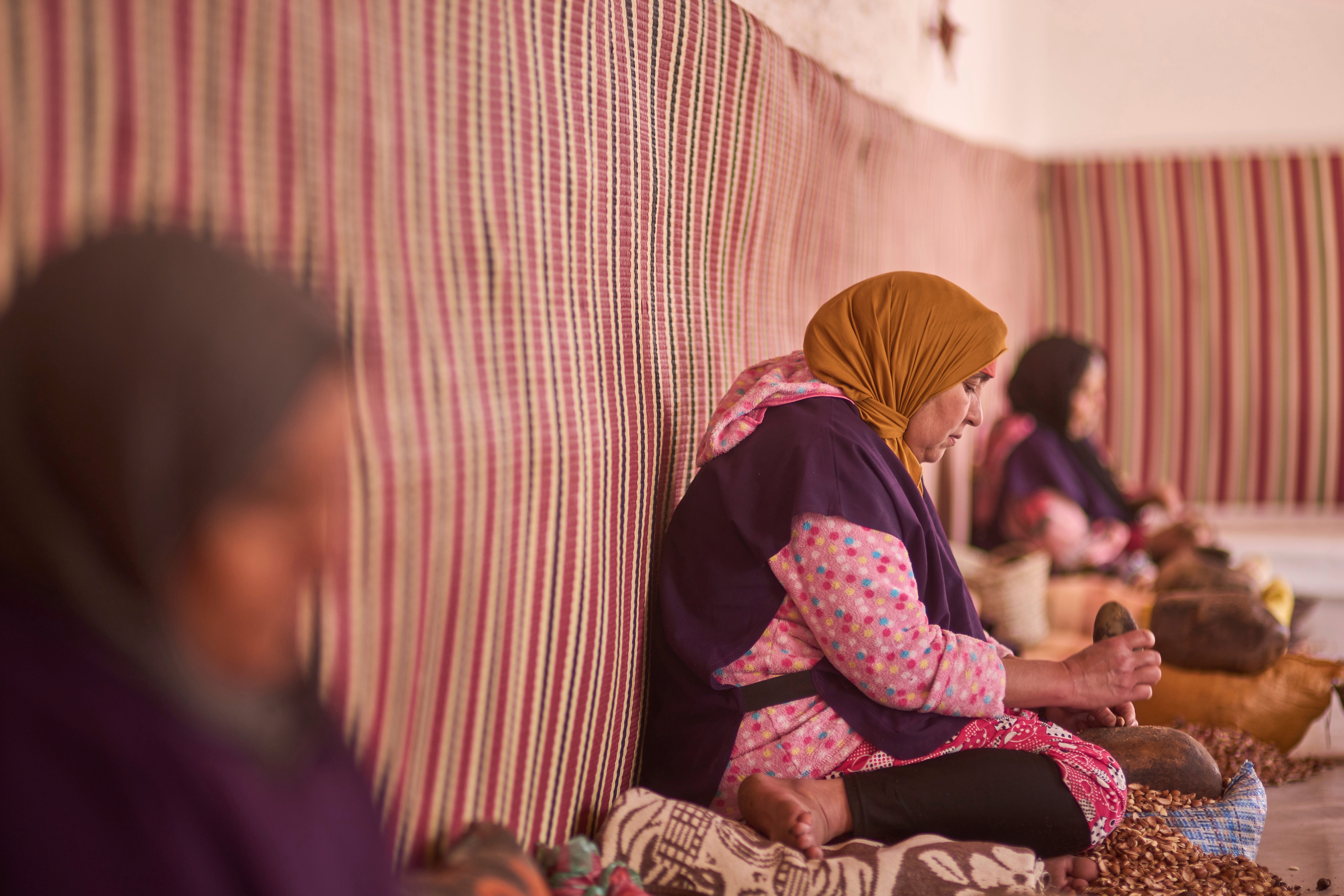Argan oil, often described as “liquid gold” for its hydrating, luscious, and restorative qualities, is a global cosmetic marvel.
Yet, in Morocco, it’s more: a vital lifeline for rural women, but also a product whose growing demand is slowly buckling the very forests it comes from.
To produce it, women crouch over stone mills, grinding kernels. One kilogram – roughly two days of work – earns them around $3, enough for a modest foothold in an economy where opportunities are scarce. This practice links them to generations past.
Cooperative worker Fatma Mnir said: “We were born and raised here. These traditions come from nature, what our parents and grandparents have taught us and what we’ve inherited.”
Long a staple in local markets, argan oil today is found in luxury hair and skin care products lining drugstore aisles worldwide.
However, its runaway popularity is now threatening the very argan forests it comes from. Overharvesting, piled on top of persistent drought, is severely straining trees once seen as resilient in the harshest of conditions.
Hafida El Hantati, owner of one of the cooperatives that harvests the fruit and presses it for oil, said the stakes go beyond the trees, threatening cherished traditions.
“We must take care of this tree and protect it because if we lose it, we will lose everything that defines us and what we have now,” she said at the Ajddigue cooperative outside the coastal town of Essaouira.
A forest out of time

For centuries, argan trees have supported life in the arid hills between the Atlantic Ocean and the Atlas Mountains, feeding people and animals, holding soil in place and helping keep the desert from spreading.
The spiny trees can survive in areas with less than an inch of annual rain and heat up to 50 degrees Celsius (122 Fahrenheit). They endure drought with roots that stretch as far as 115 feet (35 meters) underground. Goats climb trees, chomp their fruit, and eventually disperse seeds as part of the forest’s regeneration cycle.
Moroccans stir the oil into nut butters and drizzle it over tagines. Rich in vitamin E, it’s lathered onto dry hair and skin to plump, moisturize and stave off damage. Some use it to calm eczema or heal chicken pox.
But the forest has thinned. Trees bear fewer fruit, their branches gnarled from thirst. In many places, cultivated land has replaced them as fields of citrus and tomatoes, many grown for export, have expanded.
Communities once managed forests collectively, setting rules for grazing and harvesting. Now the system is fraying, with theft routinely reported.
What’s wrong with the forest

But a forest that covered about 5,405 square miles (14,000 square kilometers) at the turn of the century has shrunk by 40 per cent. Scientists warn that argan trees are not invincible.
“Because argan trees acted as a green curtain protecting a large part of southern Morocco against the encroaching Sahara, their slow disappearance has become considered as an ecological disaster,” said Zoubida Charrouf, a chemist who researches argan at Université Mohammed V in Rabat.
Shifting climate is a part of the problem. Fruit and flowers sprout earlier each year as rising temperatures push the seasons out of sync.
Goats that help spread seeds can be destructive, too, especially if they feed on seedlings before they mature.
Overgrazing has become worse as herders and fruit collectors fleeing drier regions encroach on plots long allocated to specific families.
The forests also face threats from camels bred and raised by the region’s wealthy. Camels stretch their necks into trees and chomp entire branches, leaving lasting damage, Charrouf said.
Liquid gold, dry pockets

Today, women peel, crack and press argan for oil at hundreds of cooperatives. Much makes its way through middlemen to be sold in products by companies and subsidiaries of L’Oréal, Unilever, and Estée Lauder.
But workers say they earn little while watching profits flow elsewhere. Cooperatives say much of the pressure stems from climbing prices. A 1-liter bottle sells for 600 Moroccan dirhams ($60), up from 25 dirhams ($2.50) three decades ago. Products infused with argan sell for even more abroad. Cosmetics companies call argan the most expensive vegetal oil on the market.
The coronavirus pandemic upended global demand and prices and many cooperatives closed. Cooperative leaders say new competitors have flooded the market just as drought has diminished how much oil can be squeezed from each fruit.
Cooperatives were set up to provide women a base pay and share profits each month. But Union of Women’s Argan Cooperatives President Jamila Id Bourrous said few make more than Morocco’s minimum monthly wage.
“The people who sell the final product are the ones making the money,” she said.
Some businesses say large multinational companies use their size to set prices and shut others out.
Khadija Saye, a co-owner of Ageourde Cooperative, said there were real fears about monopoly.
“Don’t compete with the poor for the one thing they live from,” she said. “When you take their model and do it better because you have money, it’s not competition, it’s displacement.”
One company, Olvea, controls 70 per cent of the export market, according to data from local cooperatives. Cooperatives say few competitors can match its capacity to fill big orders for global brands. Representatives for the company did not respond to requests for comment.
Mounting challenges, limited solutions

On a hill overlooking the Atlantic, a government water truck weaves between rows of trees, pausing to hose saplings that have just started to sprout.
The trees are a project that Morocco began in 2018, planting 39 square miles (100 square kilometers) on private lands abutting the forests. To conserve water and improve soil fertility, argan trees alternate rows with capers, a technique known as intercropping.
The idea is to expand forest cover and show that argan, if properly managed, can be a viable source of income. Officials hope it will ease pressure on the overharvested commons and convince others to reinvest in the land. The trees were expected to begin producing this year but haven’t during a drought.
Another issue is the supply chain.
“Between the woman in the village and the final buyer, there are four intermediaries. Each takes a cut. The cooperatives can’t afford to store, so they sell cheap to someone who pays upfront,” Id Bourrous, the union president, said.
The government has attempted to build storage centers to help producers hold onto their goods longer and negotiate better deals. So far, cooperatives say it hasn’t worked, but a new version is expected in 2026 with fewer barriers to access.
Despite problems, there’s money to be made.
During harvest season, women walk into the forest with sacks, scanning the ground for fallen fruit. To El Hantati, the forest, once thick and humming with life, feels quieter now. Only the winds and creaking trees are audible as goats climb branches in search of remaining fruits and leaves.
“When I was young, we’d head into the forest at dawn with our food and spend the whole day gathering. The trees were green all year long,” she said.
She paused, worried about the future as younger generations pursue education and opportunities in larger cities.
“I’m the last generation that lived our traditions — weddings, births, even the way we made oil. It’s all fading.”

